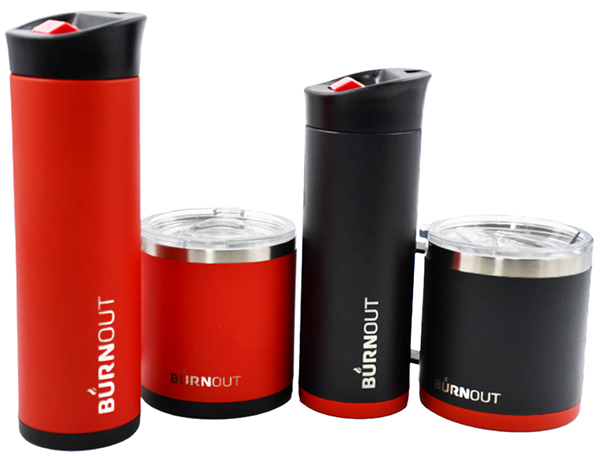Material Research Leads to the Development of a Temperature-Regulating Mug
Dr. Hongbin Ma, CEO of ThermAvant Technologies LLC based in Columbia, Missouri, had a common problem: his coffee often went cold before he could finish it. This everyday frustration led him to leverage his expertise in phase-change materials, a topic he was exploring through a NASA-funded study. Phase-change materials are unique substances that can absorb or release significant amounts of heat as they transition between solid and liquid states. This property makes them ideal for maintaining a steady temperature.
NASA has a long history of using phase-change materials to handle extreme temperature conditions in space. These materials have been applied in various projects, including the Apollo lunar rover, the International Space Station, the Orion capsule, and even the headlights on the latest spacesuit designs. In his research, Ma tested and recommended a specific phase-change material for use in a spacesuit-cooling system, a modified version of those used in spacecraft.
For phase-change materials to be useful, they must transition at the desired temperature and be safe for humans. Some effective options, such as paraffin wax and refrigerants, are toxic and could pose a risk if a leak occurred. Therefore, Ma and his team recommended a bio-based alternative for spacesuit applications.
Interestingly, these bio-based waxes, which are similar to beeswax but derived from soy, also turned out to be ideal for maintaining the optimal temperature of coffee. ThermAvant Technologies saw an opportunity to apply this technology to a consumer product. In 2018, they released the Burnout Mug, a vacuum-insulated mug featuring a bio-based wax called HeatZorb. This wax is sealed between the inner and outer shells of the mug and is specially formulated to keep hot drinks at the perfect temperature.
When hot liquid is poured into the Burnout Mug, the HeatZorb wax absorbs excess heat and melts, quickly bringing the beverage to a drinkable temperature. As the drink begins to cool, the stored heat is slowly released back into the liquid, maintaining an ideal temperature for an extended period.
Beyond enhancing the coffee-drinking experience, ThermAvant Technologies is exploring other applications for this technology, particularly in the medical field. Two promising developments include a small insulin container and a donor organ transportation box, both of which require precise, controlled temperatures. This demonstrates how NASA’s investment in material science continues to spur innovation across various industries, from hot beverages to life-saving medical equipment.
Understanding Phase-Change Materials
Phase-change materials (PCMs) are special substances that absorb or release large amounts of heat when they change their physical state, such as from solid to liquid or vice versa. This characteristic is highly beneficial for applications where temperature regulation is crucial. When a PCM absorbs heat, it melts and stores the energy. When it cools down, it solidifies and releases the stored energy.
NASA’s Use of Phase-Change Materials
NASA has utilized PCMs in several high-profile projects to manage temperature extremes in space environments. The Apollo lunar rover, for instance, used PCMs to regulate its temperature during moon missions. Similarly, the International Space Station employs these materials to maintain a stable internal environment, despite the harsh conditions of space.
The Orion capsule, designed for long-duration missions, also benefits from PCM technology. Even the latest spacesuit designs feature headlights that use PCMs to prevent overheating. Ma’s research focused on identifying a PCM suitable for a spacesuit-cooling system, ensuring it was both effective and safe for astronauts.
Safe and Effective PCMs
Selecting the right PCM involves balancing effectiveness and safety. While paraffin wax and certain refrigerants are efficient at temperature regulation, they are toxic and pose significant risks if leaked. Ma’s team ultimately recommended a bio-based wax, which is non-toxic and safe for human use. This wax, derived from soy and resembling beeswax, turned out to be not only suitable for spacesuits but also for consumer products like coffee mugs.
The Burnout Mug: A Practical Application
The Burnout Mug represents a practical application of Ma’s research into PCMs. Released in 2018, this mug uses HeatZorb, a bio-based wax, to regulate the temperature of hot beverages. The wax is vacuum-sealed between the mug’s inner and outer shells. When hot coffee is poured in, HeatZorb absorbs the excess heat, melting in the process and bringing the coffee to a drinkable temperature. As the coffee cools, the wax solidifies, releasing stored heat back into the beverage and maintaining an optimal drinking temperature for longer.
Future Applications in the Medical Field
ThermAvant Technologies is not stopping at coffee mugs. The company is actively developing other applications for their PCM technology, particularly in the medical field. Two notable projects include a small container for insulin and a transportation box for donor organs. Both of these products rely on maintaining specific, controlled temperatures to ensure effectiveness and safety. This highlights how innovations driven by space research can have far-reaching impacts, improving everyday life and advancing critical medical technologies.
Conclusion
Dr. Hongbin Ma’s work on phase-change materials, funded by NASA, has led to significant advancements in temperature regulation technology. From enhancing the coffee-drinking experience with the Burnout Mug to developing life-saving medical equipment, this research underscores the broader impact of space science on various industries. As ThermAvant Technologies continues to explore new applications, the potential for PCM technology to improve our daily lives and critical medical procedures remains vast and promising.
For more information, you can visit the NASA website.
For more Information, Refer to this article.
























![The Apex Legends Digital Issue Is Now Live! Apex Legends - Change Audio Language Without Changing Text [Guide]](https://www.hawkdive.com/media/5-Basic-Tips-To-Get-Better-On-Apex-Legends-1-218x150.jpg)







